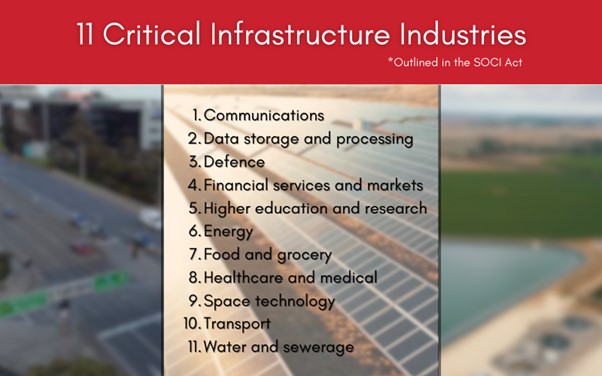How to avoid shutdowns and downtime in critical infrastructure
Author: Danny Smith
Critical infrastructure is evolving. Scaling with a growing population and fast-moving economy, digital technologies are essential to ensure Australia’s defence, national security, and economic and social stability.
In today’s landscape, even a minor shutdown or a few minutes of downtime can be detrimental to industries
being relied upon to deliver many of the essentials of daily modern life. So, how do we avoid shutdowns and downtime in critical
infrastructure during a period of digital transition?
1. Asset failure and Inadequate Maintenance
Digital transformation in critical infrastructure begins by automating manual tasks and digitally connecting equipment for better monitoring. While this transformation is essential to mitigate risks posed by asset failure, it's not a cure-all for downtime.
Connecting critical assets enables comprehensive data collection, forming the foundation for data-driven decision-making. Despite this, effective asset monitoring remains crucial, utilizing raw data from digitization.
Predictive maintenance, facilitated by integrated data analytics, utilizes pattern recognition and AI to
pre-emptively identify maintenance needs in critical infrastructure. By harnessing these technologies, organizations can enhance
operational efficiency and minimize disruptions, ensuring smoother and more reliable infrastructure performance.
2. Cyber threat or breach
 Cyber
security threats are a major cause of downtime. Typically, when cyber is mentioned, we automatically think about information technology
(IT), but operational technology (OT) is just as important in critical infrastructure.
Cyber
security threats are a major cause of downtime. Typically, when cyber is mentioned, we automatically think about information technology
(IT), but operational technology (OT) is just as important in critical infrastructure.
Remote access to industrial control systems (ICS) and IT-OT infrastructure assets, which became a widely adopted practice during the COVID-19 pandemic, has increased the vulnerability of these systems.
The Australian Government has been proactive in developing robust cyber security frameworks to ensure the safety of Australia’s critical infrastructure, and adhering to these guidelines is a requirement for most critical infrastructure operations.
The Security of Critical Infrastructure (SOCI) Act, introduced in 2018, was introduced to improve the cyber security protection and resilience of the Critical National Infrastructure (CNI) industry sector.
In a constantly evolving digital landscape, there is no perfect gold standard solution available in cyber
security, but complying with the SOCI Act through a professional review process can support understanding
your requirements and developing resilience.
Ready to start driving change? Take the Digital Diagnostic.
Whether you are just starting your digital transformation journey to address these challenges, or already well on your way – the need for change is clear.
Constantly changing technology, limited resources, short-term expectations of return, and the complicated ‘people’ factor can be barriers to driving change – but organisations need to move today to create tomorrow.
Now, more than ever, it is important to ask – ‘Where is your organisation on its digital transformation journey compared to where you could be?’
To answer this all-important question, SAGE has developed The Digital Diagnostic!
Link : https://www.gotosage.com/diagnostic/


